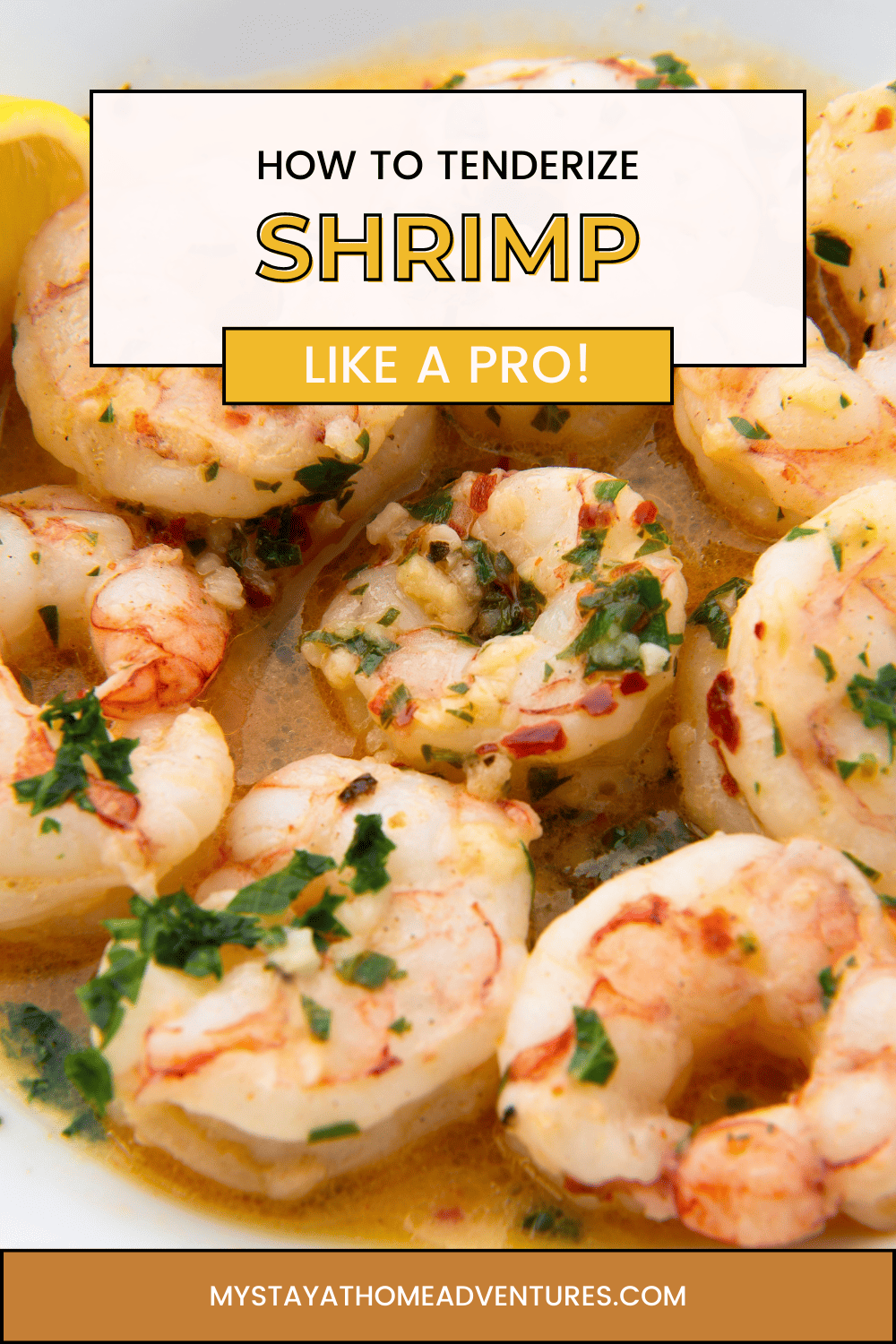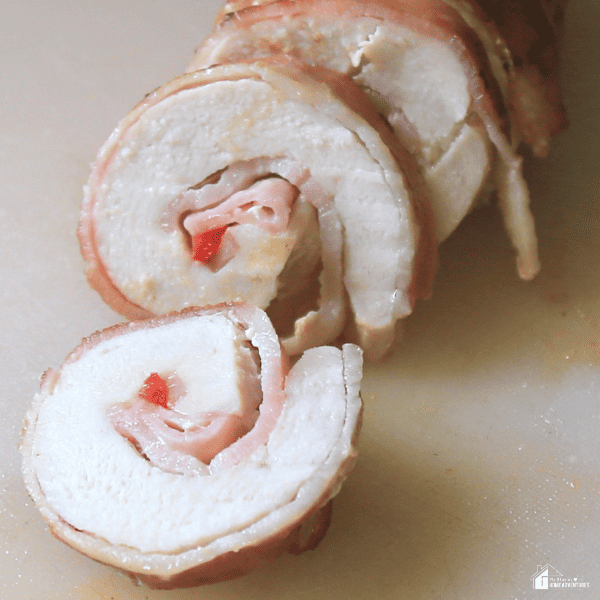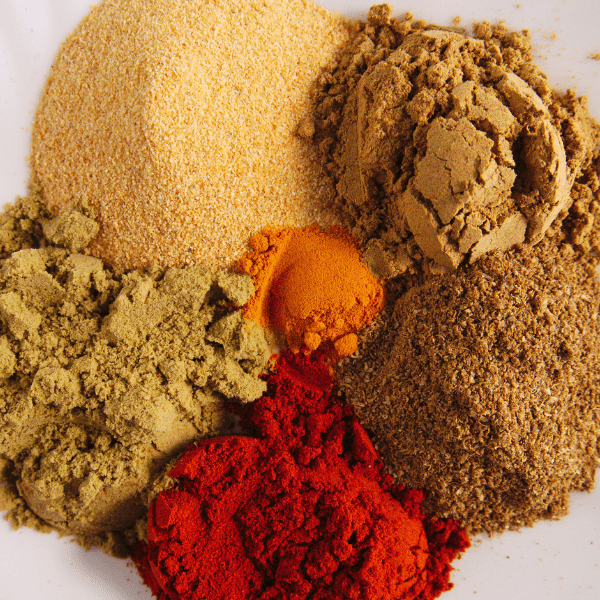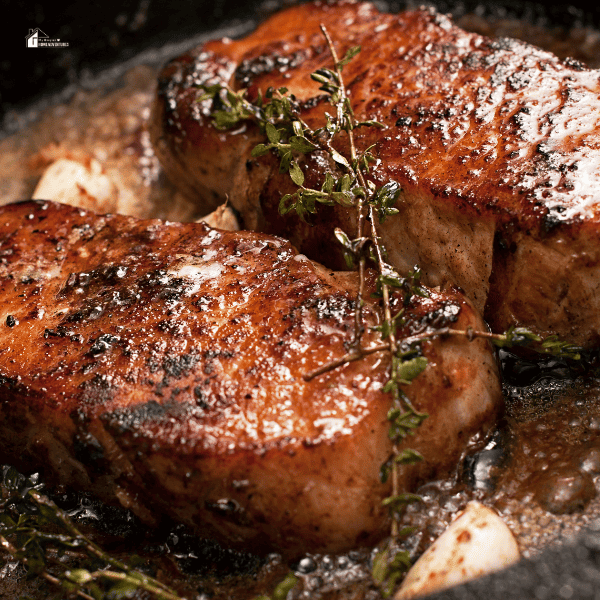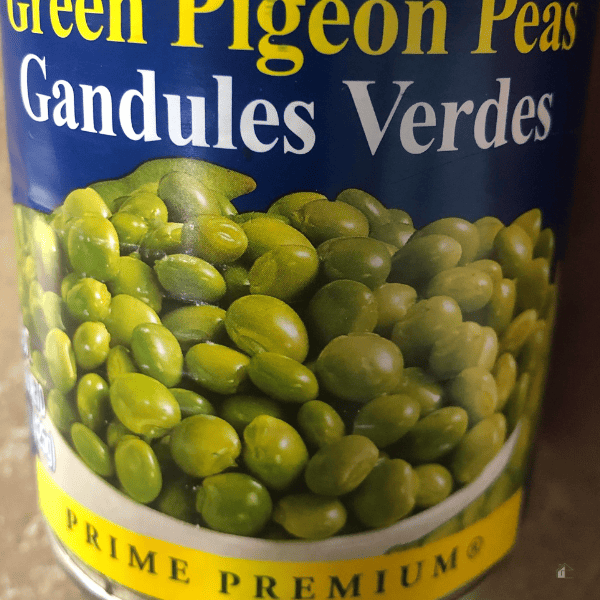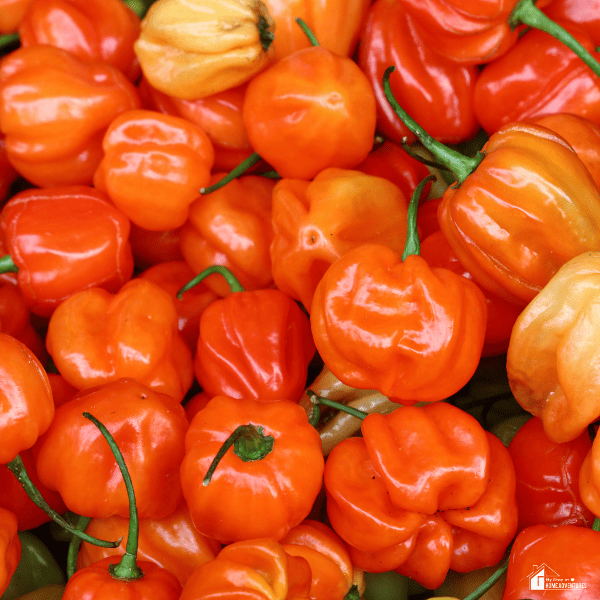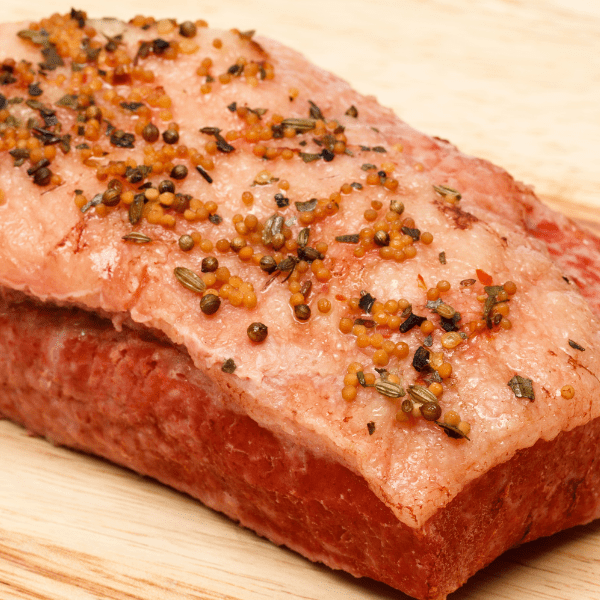How To Tenderize Shrimp
This post may contain affiliate links which might earn us money. Please read my Disclosure and Privacy policies hereAre you tired of ending up with rubbery, overcooked shrimp every time you attempt to make a seafood dish? We love shrimp on this site, and you can find many shrimp recipes here.
Anyway, look no further than these easy techniques for tenderizing shrimp. From selecting the right size and type of shrimp to brining and adjusting your cooking method, these tips will have you serve perfectly juicy shrimp every time. Say goodbye to disappointing shrimp dishes and hello to delicious, restaurant-quality meals made right in your own kitchen.
Let's answer your top questions about how to tenderize shrimp, shall we?
How do you make shrimp soft and tender?
Remembering a few key techniques to make shrimp soft and tender. One effective method is to brine the shrimp, which involves soaking them in a mixture of water, salt, and sugar for about 30 minutes before cooking. This helps to break down the protein structure of the shrimp and keep them moist and flavorful.
Another option is to poach the shrimp in cold water, which again helps to ensure that they stay tender and succulent.
Also, avoiding overcooking the shrimp is essential – they cook very quickly, so keep a close eye on them and remove them from heat as soon as they turn pink and opaque.
You might enjoy these shrimp recipes:
How do the Chinese tenderize shrimp?
It's no secret that Chinese cuisine has some of the most flavorful dishes in the world. Regarding shrimp, the Chinese have a special technique for ensuring that it's tender and delicious. Here are a few ways they tenderize their shrimp:
- Marination: Slicing the shrimp thin and marinating it in spices is one way to ensure it's tender before cooking. This allows the flavors to absorb and penetrate the shrimp, making it tender and juicy.
- Baking Soda: Baking soda is often used to tenderize shrimp effectively and quickly. It is sprinkled on shrimp in a technique known as velveting, which involves marinating the shrimp in baking soda. This method allows the shrimp to absorb the baking soda, which lightens the texture of quick bread and cookies.
- Lye water: Lye is another Chinese ingredient added to noodles or rice to impart flavor and texture. Adding lye water to shrimp could be a great way to tenderize it.
Overall, the Chinese have many ways to tenderize shrimp, which are simple, effective, and add great flavor. When cooking shrimp, it is always important to properly prepare them to ensure they are tender and flavorful.
- Other ways to tenderize shrimp:
| Tenderizing Technique | Steps |
|---|---|
| Marinating Shrimp | 1. Prepare a marinade with acidic ingredients (e.g., lemon juice, vinegar) |
| 2. Add desired seasonings and spices | |
| 3. Place the shrimp in a non-reactive container or resealable plastic bag | |
| 4. Pour the marinade over the shrimp | |
| 5. Refrigerate and marinate for 15-30 minutes (avoid over-marinating to prevent mushy texture) | |
| Baking Soda | 1. Mix 1 teaspoon of baking soda per pound of shrimp |
| 2. Gently toss the shrimp with the baking soda | |
| 3. Refrigerate for 15-20 minutes | |
| 4. Rinse the shrimp thoroughly under cold water and pat dry before cooking | |
| Pounding Shrimp | 1. Place the shrimp between two layers of plastic wrap |
| 2. Use a flat meat mallet or rolling pin to gently pound the shrimp to the desired thickness | |
| 3. Be cautious not to pound too hard, as shrimp can easily tear | |
| Velveting Shrimp | 1. Mix 1 egg white and 1 tablespoon of cornstarch per pound of shrimp |
| 2. Stir the shrimp into the egg white mixture until evenly coated | |
| 3. Refrigerate for 20-30 minutes | |
| 4. Blanch the shrimp in boiling water for 30 seconds, then drain and rinse under cold water |
These techniques and steps provide a guide on how to tenderize shrimp for various recipes and cooking methods. Always be careful not to over-tenderize or over-marinate shrimp, as it can lead to a mushy texture.
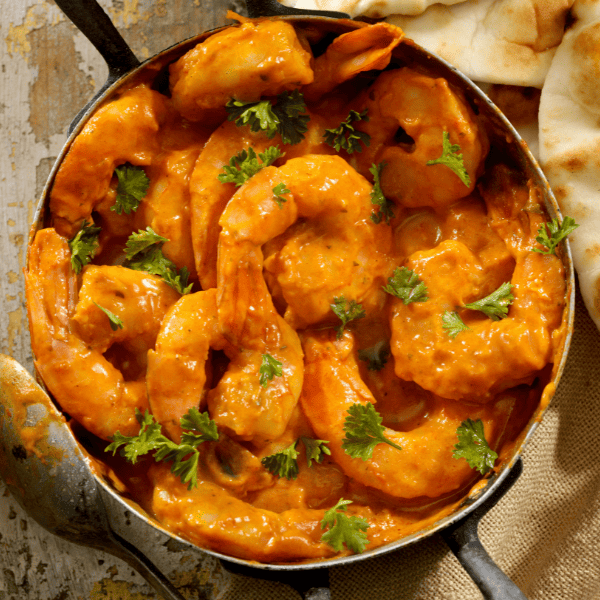
What's the best thing to soak shrimp in?
The best thing to soak shrimp in is a brine solution consisting of water and salt. This helps to break down the protein structure of the shrimp, keeping them moist and flavorful. The ratio for a brining solution should be 1 tablespoon of sea salt (or kosher salt) to 2 cups of cold water.
For extra flavor, you can add other spices or herbs, such as garlic powder, black pepper, oregano, and bay leaves. Soaking the shrimp in this mixture for about 30 minutes before cooking will achieve tender, juicy results that will surely please everyone's tastebuds.
How do you make shrimp less tough?
Making shrimp less tough is all about proper preparation and cooking. As mentioned above, brining the shrimp with water, salt, and sugar for 30 minutes before cooking will help keep them juicy and tender. Additionally, be sure not to overcook the shrimp as they cook very quickly – remove them from heat as soon as they turn pink and opaque.
Finally, consider changing your cooking method. Sautéing or grilling are two great options for making shrimp less tough as they require less time than boiling or baking.
Now that you have these top questions answered, let's get into more details that include brining, shrimp size, plus more to help you tenderize shrimps.
Proly preparing shrimp before cooking is crucial for achieving tender and flavorful results. Here's why it's important to tenderize shrimp:
- Shrimp is known for its delicate flavor and tender meat; proper preparation enhances these qualities.
- Buying fresh or frozen shrimp is important to ensure quality. Avoid shrimp that has been thawed and refrozen, as it can negatively impact the texture.
- Buying shell-on shrimp and peeling them yourself allows for better control over the cooking process and can result in more tender shrimp.
- Choosing the right size of shrimp is important for different dishes. Smaller sizes work best in soups and stews, while larger sizes are ideal for grilling or sautéing.
- Brining shrimp can help to tenderize it, another key step in achieving the desired texture.
- Poaching shrimp using a cold water-start method can also help to retain tenderness.
- Adding sugar to a shrimp brine can encourage better browning when grilling, resulting in both tender and flavorful shrimp.
Overall, properly preparing and tenderizing shrimp is essential in ensuring that it is enjoyed to the fullest.
Fresh Shrimp vs. Frozen Shrimp
Ensuring that the shrimp being used for any dish is of the highest quality is crucial. When shopping for shrimp, it is important to remember that previously frozen shrimp should be avoided, as they may have been thawed and refrozen multiple times, affecting their texture and flavor.
Instead, opt for fresh or frozen shrimp, which can be just as good if sourced from a reliable vendor.
Fresh shrimp should be purchased and used immediately, while frozen shrimp can be safely stored and used for longer. Always remember to check the packaging to see if the shrimp has been previously frozen or not.
Advantages of Shell-on Shrimps
Buying-on shrimp and peeling them yourself has several advantages. Here are a few to consider:
- Shrimp cooked with the shells on have a more intense and complex flavor. When the shells are left on during cooking, they contribute a toasty, briny depth that adds a lot to any dish.
- Peeling shrimp yourself can be cheaper than buying pre-peeled shrimp, as you are basically paying for someone else to do the work for you.
- Buying unpeeled shrimp also means you can check the quality of the shrimp before buying. Avoid shrimp that has been thawed and refrozen, as this can affect the texture and flavor.
Peeling shrimp can also be a fun and engaging activity at the dinner table, especially for kids!
In summary, buying shell-on shrimp and peeling them yourself is a great way to enhance the flavor of your dishes and save money.
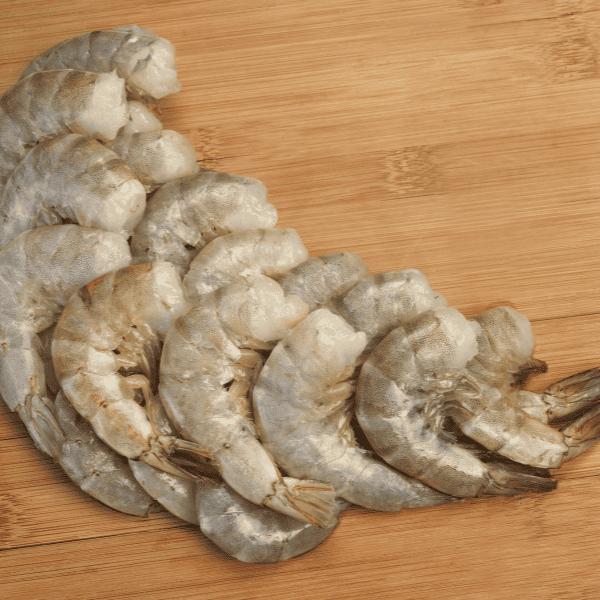
Shrimp Size Matters
Shrimp come in various sizes, and choosing the right size can make a difference in your dish. The number of shrimp per pound determines the size of a shrimp. The larger the shrimp, the smaller the count. Here are some tips for choosing the right size for your dish:
Colossal or Jumbo: These are the largest shrimp available and are best for grilling or as the focal point of a dish.
- Large: These versatile sizes work well in pasta or appetizers.
- Medium: These smaller sizes are good for dishes requiring multiple shrimp, like a stir-fry.
- Small: These are the smallest size and are great for salads or dips.
Remember that larger shrimp will take longer to cook and may be more expensive. Also, try to avoid shrimp that has been thawed and refrozen, as it can impact the quality and flavor. You can ensure that your dish turns out perfectly by choosing the right size shrimp.
Tenderizing Shrimp Methods
Brining is a technique used to soak shrimp in a saltwater solution to enhance their flavor and texture. This method can soften the shrimp's muscle fibers, making them more tender and juicier. It's recommended to brine shrimp for about 30 minutes; too much longer and the shrimp can become too salty.
With a basic brining solution of water, salt, and sugar, you can customize the recipe by adding spices or other aromatics to enhance the flavor. Brining is an excellent technique for grilling, pan-frying, or sauteing shrimp. Try brining your shrimp for a unique and succulent dish!
Brining using salt and baking soda.
To tenderize shrimp, use a brine of salt and baking soda. This quick and easy method improves the texture and moisture of the shrimp. To create a brine, mix about 1 teaspoon of kosher salt and 1/4 teaspoon of baking soda for every pound of shrimp.
Toss the shrimp in the mixture and allow it to rest for 15 minutes to an hour in the refrigerator. The salt helps to keep the shrimp moist as it cooks, while the alkaline baking soda provides a firm texture. Incorporating this step into your shrimp preparation process can make a significant difference in the overall quality of your dish.
Poaching shrimp using a cold water
One way to cook shrimp perfectly is by poaching them using a cold water-start method. This technique involves slowly raising the temperature of the water, which provides more time for the shrimp to cook evenly. The gentle heat also helps retain the shrimp's texture and moisture, resulting in plump and juicy seafood that's not tough or rubbery.
This approach is especially crucial because most poached shrimp are served chilled and with minimal dressing—meaning there's no warm sauce to compensate for a botched job. So, by using the cold water-start method, you can achieve perfectly cooked, edge-to-edge, tender shrimp every time.
Sugar To Brine Shrimp
When brining shrimp, adding sugar to the brine can help to encourage better browning and caramelization. The sugar reacts with the proteins in the shrimp to create a crusty exterior while keeping the inside tender and juicy. A brine with salt, baking soda, and sugar is a great way to tenderize shrimp before grilling.
Be sure to pat the shrimp dry before grilling to prevent excess moisture from hindering the browning process.
Also, preheating the grill to high heat and lightly oil the grates can help to ensure perfectly browned, caramelized shrimp every time.
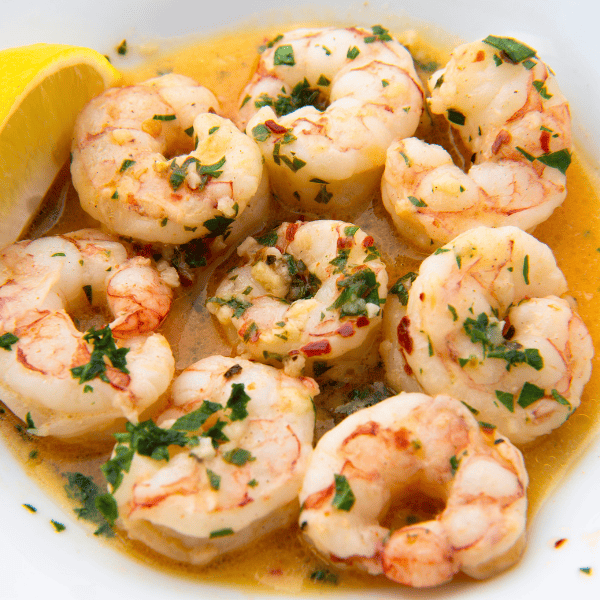
How To Prepare Shrimp
Properly preparing shrimp is crucial to ensure that it's tender and flavorful when cooked. Here are some tips to help you prepare shrimp like a pro:
- Buy fresh or frozen shrimp and avoid those that have been thawed and refrozen.
- Opt for shell-on shrimp and peel them yourself. This will help to maintain the shrimp's natural moisture and flavor.
- Choose the right size of shrimp for your dish – larger shrimp are ideal for grilling, while smaller ones work well in soups and stews.
- Brining is an excellent technique to tenderize shrimp. The combination of salt and baking soda retains the shrimp's natural juices and texture.
- Poaching shrimp using a cold water-start method is a game-changer, resulting in perfectly cooked, tender shrimp.
- Adding sugar to your shrimp brine will encourage better browning when grilling.
By following these simple steps, you'll ensure that your shrimp dishes are always flavorful and tender.

